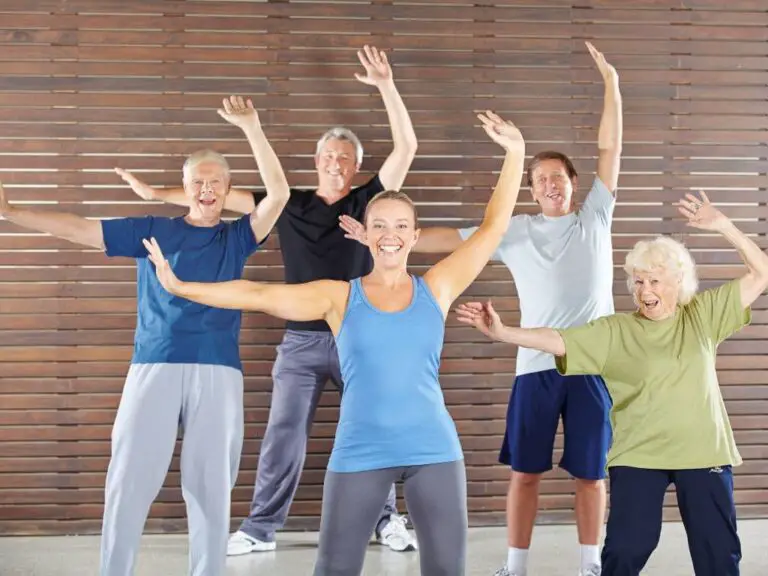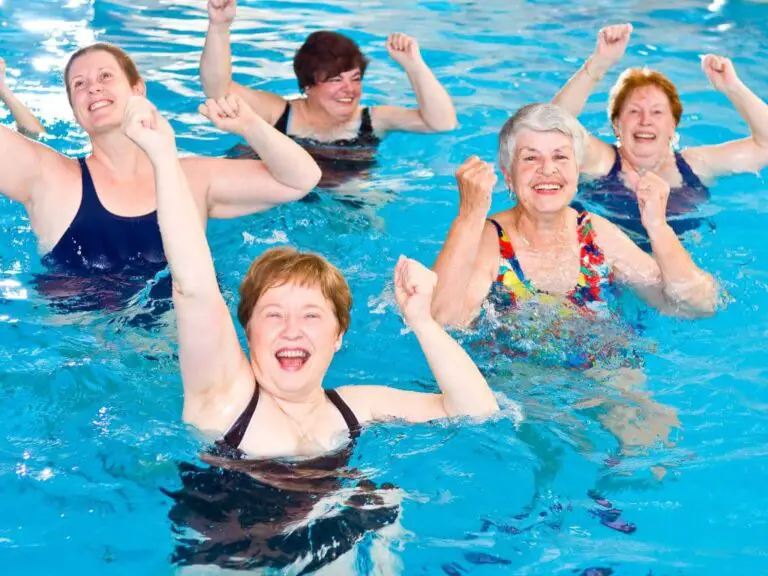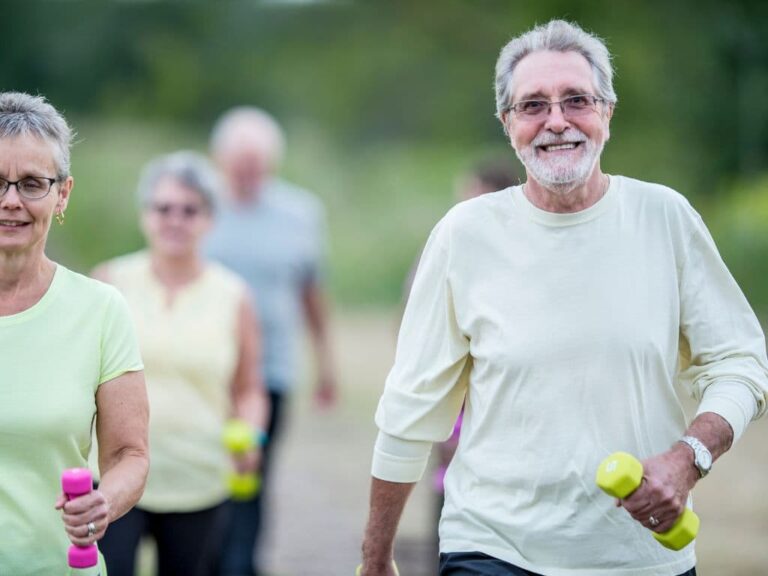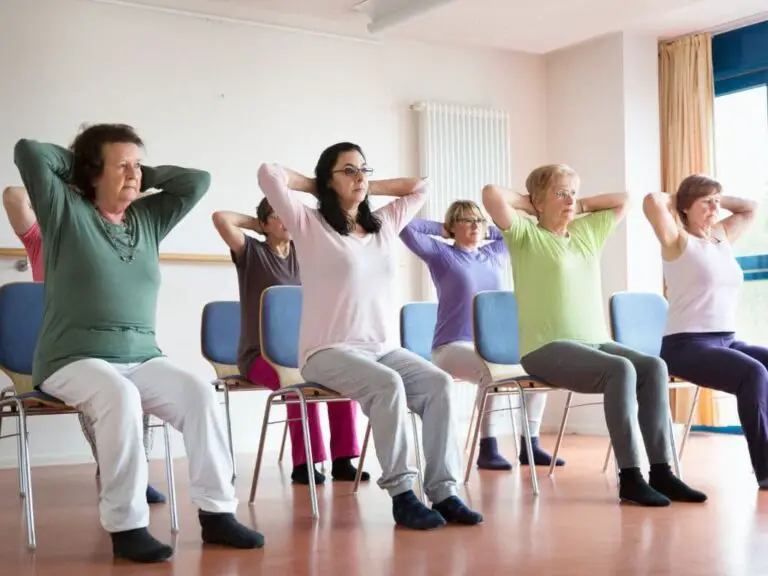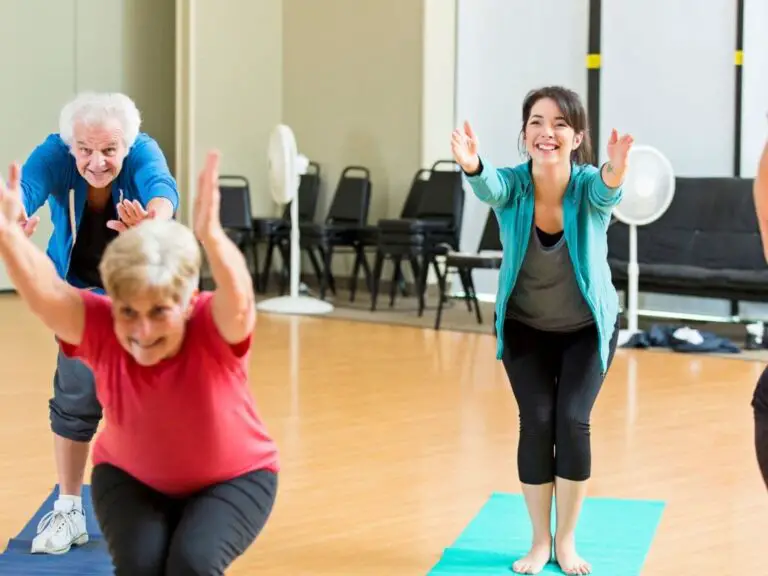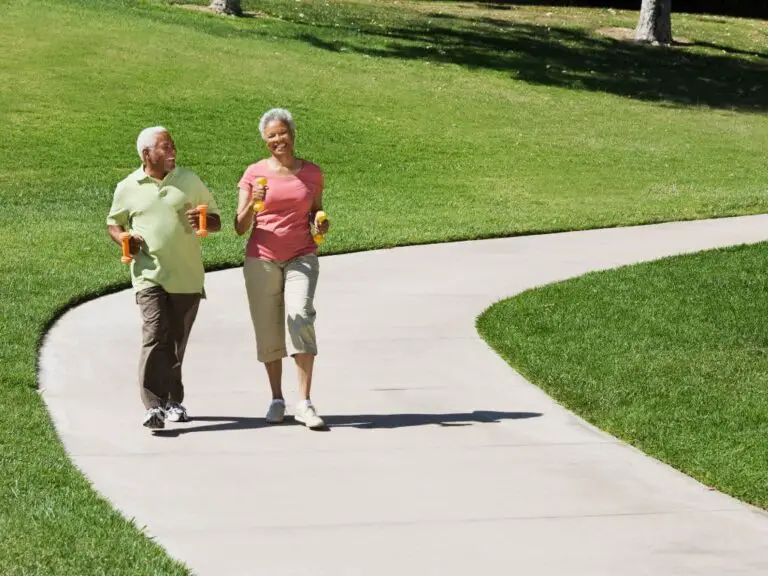The Effects of Daily Planking for Seniors: Benefits and Precautions
Planking is a simple yet challenging bodyweight exercise that has become popular in recent years. This isometric core strength exercise involves maintaining a position similar to a push-up at the top of the movement, with your forearms and toes pressing into the floor while keeping your back straight.
For senior citizens, incorporating planking into their daily exercise routine can provide a range of benefits to improve their health, mobility, balance, and quality of life. However, it is important to be aware of precautions to plank safely and avoid potential injuries.
If you plank everyday, it strengthens core muscles, enhances stability and balance, improves posture and flexibility, and reduces back pain. It also boosts metabolism and bone health. However, overdoing can lead to muscle fatigue or strain. Seniors should gradually increase their planking duration while maintaining proper form and taking necessary precautions to avoid injuries.
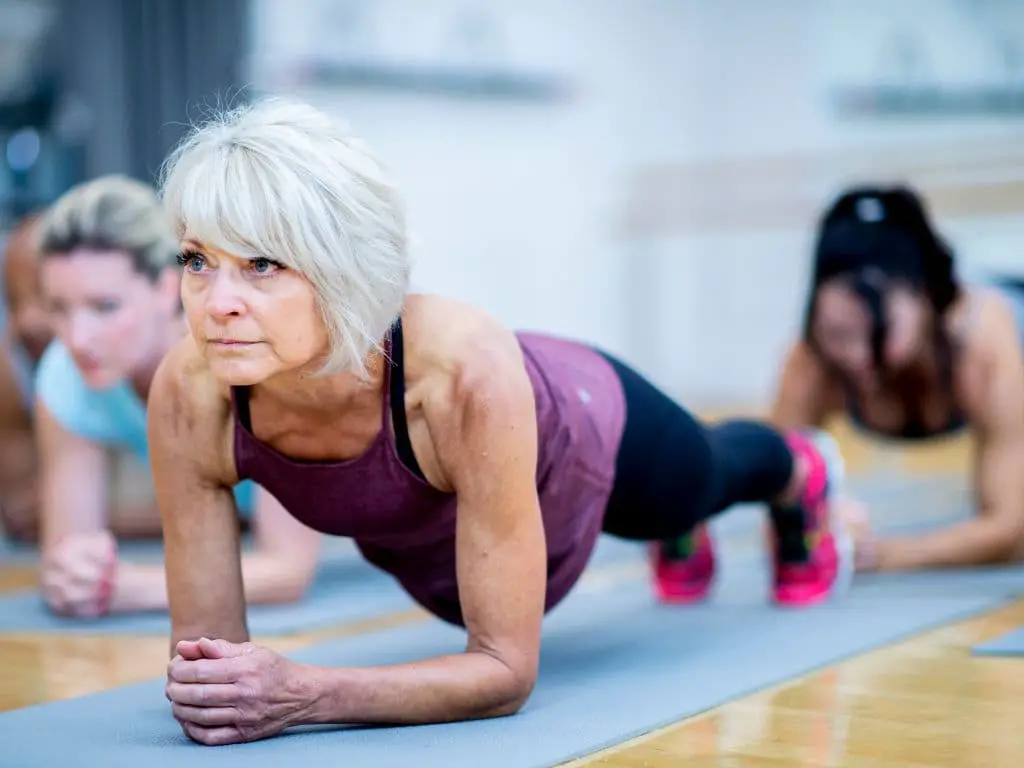
What Is Planking?
The plank is a type of isometric exercise, meaning the muscles contract statically without movement. To perform a standard plank:
- Lie face down with forearms on the floor and hands clasped
- Extend your legs behind you and rise up onto your toes
- Tighten your core by contracting your abdominal and back muscles
- Keep your body in a straight line from head to heels without sagging or arching
- Hold this straight plank position for as long as you can with proper form
Planking focuses on strengthening the core muscle groups including the abdominals, back, shoulders, and glutes. It requires balance and stability as you support your body weight on your forearms and toes.
Why Is Planking Beneficial For Seniors?
Here are some of the biggest benefits older adults can gain from doing the plank exercise daily:
1. Strengthens Core Muscles
The plank specifically targets and strengthens the core muscles in the abdomen, pelvis, lower back, hips and shoulders. Strong core muscles provide more stability for the spine and upper body. This can improve posture, balance, and ability to perform daily activities like getting in and out of a chair.
2. Improves Balance and Stability
Isometric planking strengthens core muscles that are essential for balance and stability. It also improves core control by challenging your body to remain steady and balanced in a fixed position. Enhanced balance and stability reduces risk of falls which are a major health hazard for the elderly.
3. Enhances Bone Health
The isometric contractions involved in planking apply muscle tension that promotes increased bone density. Regular planking can help fend off osteoporosis and loss of bone mass often associated with aging. This makes bones stronger and less prone to fracture.
4. Boosts Metabolism
Planking increases muscle activation that requires more energy expenditure. This modest boost in metabolic rate can help offset the drop in metabolism that accompanies aging. More energy burnt also assists with maintaining a healthy body weight and reducing fat.
5. Improves Posture
Poor posture is common as a result of weak core muscles, osteoarthritis and osteoporosis. Performing planks strengthens muscles in the shoulders, neck, back and abdominals to improve spinal alignment and postural control. Better posture reduces strain on the back and neck.
6. Reduces Back Pain
A strong core stabilizes the spine to absorb shock and reduce load on the lumbar discs and facet joints. The isometric contraction while planking also relieves pressure on the discs, which decreases compression that contributes to back pain. This is beneficial for older adults with chronic back issues.
7. Increases Flexibility
Holding steady plank positions engages various muscle groups simultaneously. This full body engagement stretches and expands joints throughout the body. Regular planking can help seniors maintain and improve flexibility in areas prone to tightness like shoulders, chest and hips.
How Can Seniors Safely Start a Daily Planking Routine?
It’s important for older adults to take a gradual approach when first introducing planking. Starting slow and building up minimizes strain and risk of injury:
- Consult your physician before beginning any new exercise program, especially with any medical conditions
- Warm up muscles first through light cardio and dynamic stretches
- Start with basic planking for shorter 10-15 second intervals
- Focus on proper form – keep back flat and body in straight line from head to heels
- Build endurance over time, progressively increasing plank hold durations
- Only plank to point of fatigue – stop before form breaks or muscles shake
- Listen to your body and don’t overexert yourself
- Allow rest days between plank sessions to avoid muscle fatigue
Starting with cautious, controlled positions can build core strength safely to support planking daily. Proper planking technique distributed across micro-sessions prevents overexertion while optimizing results.
What Are the Precautions Seniors Should Take When Planking Every Day?
Despite the advantages, seniors should be mindful of these precautions when planking daily:
- Avoid planking if you have wrist, elbow, shoulder or spine injuries
- Use caution with osteoporosis – apply minimal stress to vulnerable bones
- Don’t hold breath during the exercise as this raises blood pressure
- Check with doctor before planking if you have heart disease or high blood pressure
- Discontinue plank immediately if you feel pain, dizziness or nausea
- Make sure floor surface is padded – use exercise mat for cushion and traction
- Keep neck in neutral position – avoid lifting head up or straining neck
- Engage core muscles to avoid excessive curve in lower back
- Prevent wrist strain by distributing weight across forearms, hands and fingers
- Stay hydrated before, during and after planking
- Monitor time and intensity to avoid muscle fatigue, strains or damage
With appropriate precautions, seniors can safely reap the rewards of a regular plank routine tailored to their fitness level and needs.
How Long Should Seniors Hold a Plank Position Each Day?
Here is a general guideline for seniors on recommended plank hold times to aim for, based on current planking ability:
| Planking Ability | Plank Hold Goal Per Session |
|---|---|
| Never planked before | 5-10 seconds |
| Beginner | 10-20 seconds |
| Intermediate | 20-45 seconds |
| Advanced | 45-90 seconds |
Remember to focus on proper form over duration. Increase times gradually as strength improves. Take breaks to avoid fatigue and overexertion. Consult a physician if any concerns.
What Variations of the Plank Exercise Are Suitable for Seniors?
There are many modified plank options that provide an easier, gentler way for seniors to build up core strength:
- Wall plank – Stand facing wall, lean forward with forearms on wall
- Inclined plank – Place hands on step, stair or bench to elevate body
- Kneeling plank – Support weight on knees instead of toes
- Half plank – Plank using forearms and knees on floor
- Plank jacks – Start in plank then move legs in and out
- Side plank – Support body sideways on one forearm and feet
Trying easier plank progressions allows seniors to advance at an appropriate pace while maintaining proper form.
Can You Overdo Planking? What Are the Signs of Overdoing It?
It is possible to overdo planking, especially for seniors. Watch for these indications you may be overdoing your plank routine:
- Muscle tremors or uncontrolled shaking
- Straining or breath holding
- Sharp pain in core, back, wrists or shoulders
- Nausea, dizziness or lightheadedness
- Extreme soreness or pulled muscles
- Inability to maintain proper form
- Planking intervals too long before complete fatigue
- Not allowing rest days between plank sessions
The key is listening to your body and responding appropriately if you experience any issues. Reduction in volume, frequency and difficulty is warranted if planks are causing excessive fatigue or discomfort. Prioritizing strict form over duration also helps avoid overexertion.
Conclusion
When performed with proper technique and smart progression, a regular planking routine offers many fitness and health benefits for seniors. Planks are an easy exercise to do at home to strengthen core muscles, enhance stability, improve posture and flexibility, and reduce back pain. Start gradually and seek medical guidance if needed. Be mindful of precautions, limitations and warning signs to safely reap the advantages of daily planking. With a prudent approach focused on quality over quantity, planks can be a beneficial addition to any senior’s exercise plan.
Frequently Asked Questions
-
What happens if you plank everyday?
Your metabolism will improve by doing planks. Planks burns more calories than traditional abdominal exercises such as crunches and sit-ups. People who live sedentary lives will find planks especially beneficial as they burn fat and improve their metabolism. Your metabolic rate will be high if you plank every day.
-
What causes belly fat in seniors?
Regardless of age, older adults have more belly fat. Older adults are less efficient at burning fat cells, which can lead to stubborn, unhealthy belly fat.
-
What happens if I do a 2 minute plank everyday?
Planks can be difficult at first but committing daily to planks has amazing mental and physical benefits. Planks helped improve my posture and made push-ups and squats much easier. There were signs of improvement in my abs, including less bloating and a flatter stomach.
-
What does 1 minute plank a day do?
She said that they are good for posture because you can strengthen your back, core and chest. It is much easier to avoid hunching and keep your shoulders down and your head up. A strong core is essential for injury prevention. It will also greatly improve your ability to exercise and move more.
-
Is it better to do more planks or longer planks?
A longer plank will generally be more effective than a shorter one. It puts greater stress on the muscles and nerve system. However, this could compromise your form and cause injury. For a great workout, you should do small sets with several sets.
-
Does holding your stomach in strengthen your core?
You can also eat your stomach. This will instantly slim down your stomach and give your abs an exercise. Sucking in your stomach activates your deep core muscles. The longer you continue to eat, the better your core will look.
-
Can I do core exercises daily?
Feliciano does not recommend doing too much core work every day. It’s going to cause more damage than good. However, you can still train your abs daily without worrying about the negative effects. It’s fine to do a bit of core work every time you exercise.
-
Why should seniors avoid abdominal crunches?
Crunches can be dangerous for senior citizens as the back is more fragile over time. Crunches that are done wrongly can cause serious injuries to your back joints. The repetitive curving or twisting of the spine can cause problems even if it is done correctly.
-
What happens if you plank for 1 minute everyday?
It reduces belly fat. The plank is an excellent exercise for removing stubborn belly fat. A plank can be a great way to reduce belly fat and give your body a flattering shape.
-
Is a 20 minute ab workout good?
Kara says that a concentrated 20-minute core workout such as this is better than doing it with other exercises or combining core work with a circuit.

